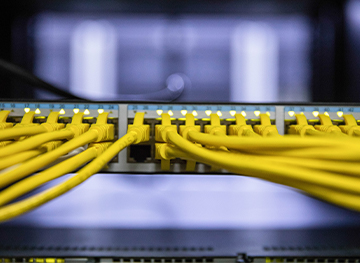There is no doubt that optical fibers are the foundation of current network construction. The service life of optical fibers is more than 20 years, and it is difficult to change after the laying and construction are in place. Therefore, the selection of carrier-grade multi-mode optical fiber jumpers needs to consider all network requirements within its life period. Therefore, Ultra-low-loss carrier-grade multimode fiber patch cords are sought after by the market. Let's take a look at the application and transmission distance of ultra-low-loss fiber models.

Win for Low Loss Fiber
The development of optical fiber communication in my country is accelerating, and with the increasing demand for big data processing, our communication network is showing an explosive growth trend at this time, and the average annual growth rate of backbone network transmission bandwidth reaches more than 50%.
Application and transmission distance of ultra-low loss fiber models
According to the optical fiber loss in the industry, optical fibers are roughly divided into three categories: ordinary optical fibers, low-loss optical fibers, and ultra-low-loss optical fibers. Among them, the attenuation of ordinary fiber is about 0.20dB/km, and the attenuation of low-loss fiber and ultra-low-loss fiber is less than 0.185dB/km and 0.170dB/km, respectively. Compared with ordinary fibers, low-loss and ultra-low-loss fibers can reduce span losses by 2dB and 3dB, respectively. Even if the number of spans remains unchanged, each span can increase the distance by 17%, and the total transmission distance is also increased by 17%.
For high-speed transmission networks, at a transmission rate of 100G, ordinary optical fibers, low-loss optical fibers, and ultra-low-loss optical fibers can transmit more than 1,000 kilometers. Except for a few long sections, existing ordinary optical fibers can handle it; for 400G transmission speed, low-loss fiber can reduce the number of stations by about 20%, and ultra-low-loss fiber can reduce the number of stations by about 40%, with obvious benefits.
The superior characteristics of ultra-low-loss fiber compared to ordinary fiber provide network headroom for extending network transition spans, expanding sites, upgrading to faster bit rates, increasing network component flexibility, or between extenders Therefore, a longer and wider regional network can be realized to meet the increasing demand for bandwidth capacity of countries around the world.
The low-loss characteristics of ultra-low-loss carrier-grade multimode optical fiber patch cords are very suitable for long-distance and large-capacity, high-speed network transmission applications, and thus produce a series of record-breaking application results. In addition, ultra-low loss fiber is widely used not only by operators, considering the low attenuation characteristics.
400G has already arrived strongly, and the application of ultra-low-loss fiber models will become more and more noticeable at this time. With the continuous integrity of the industrial chain, ultra-low-loss optical fibers will surely usher in the era of large-scale commercial use.




